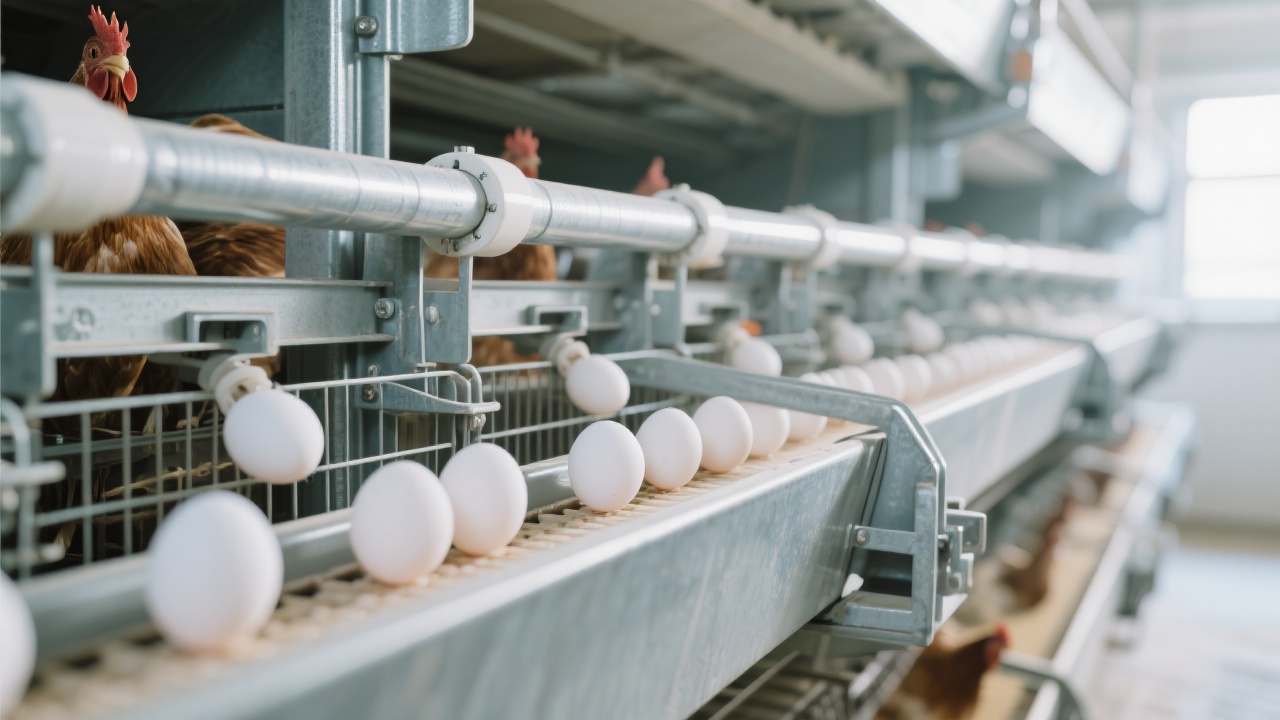
The H-type laying hen cage is a revolutionary innovation in the field of laying hen farming equipment. Different from traditional cage structures, its core lies in the unique H-shaped design. This design consists of a double - layer vertical layout, which maximizes the use of vertical space. In traditional cage systems, the space utilization rate is relatively low, usually around 50 - 60%. However, the H - type cage can increase the存栏量 by up to 30%, which means that it can house more hens per unit area. For example, in a 100 - square - meter chicken house, a traditional cage can house about 300 hens, while an H - type cage can house about 390 hens.

From the perspective of agricultural engineering, the layer spacing in H - type cages plays a crucial role in air circulation. A proper layer spacing allows fresh air to flow freely between different layers. In a well - designed H - type cage, the layer spacing is usually set at about 30 - 40 cm. This distance ensures that the air exchange rate can reach 8 - 10 times per hour, effectively reducing the concentration of harmful gases such as ammonia and carbon dioxide in the cage. In contrast, in traditional cages with improper layer spacing, the air exchange rate may be only 3 - 5 times per hour, which can lead to poor air quality and increased risk of respiratory diseases in hens.
Light is essential for the growth and egg - laying performance of hens. The layer spacing in H - type cages is designed to ensure uniform light distribution. With a scientific layer spacing, the light intensity difference between the upper and lower layers can be controlled within 10%. This uniform light environment helps hens maintain a stable biological rhythm and improve egg - laying efficiency. In traditional cages, the light intensity difference between different layers can reach 30 - 40%, which may cause uneven growth and egg - laying performance among hens.
Adequate layer spacing also contributes to disease prevention and control. In H - type cages, the reduced contact between hens on different layers due to proper spacing can effectively reduce the spread of diseases. According to research, in a chicken house using H - type cages, the incidence of infectious diseases can be reduced by about 20 - 30% compared with traditional cages.
Let's take a look at the actual data from different - scale farms. In a 5000 - hen scale farm, before using the H - type cage, the average egg - laying rate was about 80%, and the labor cost was about $5000 per month. After using the H - type cage, the egg - laying rate increased to 85%, and the labor cost decreased to $4000 per month. In a 30000 - hen scale farm, the situation is even more remarkable. Before the upgrade, the egg - laying rate was 78%, and the labor cost was $25000 per month. After using the H - type cage system, the egg - laying rate soared to 88%, and the labor cost dropped to $20000 per month. The following table shows the comparison:
| Farm Scale | Before Upgrade (Egg - laying Rate) | After Upgrade (Egg - laying Rate) | Before Upgrade (Labor Cost) | After Upgrade (Labor Cost) |
|---|---|---|---|---|
| 5000 hens | 80% | 85% | $5000 | $4000 |
| 30000 hens | 78% | 88% | $25000 | $20000 |
"The H - type laying hen cage is a significant innovation in the field of intensive laying hen farming. Its scientific design in space utilization and environmental control can effectively improve the overall efficiency of the farm. It is a practical choice for modern laying hen farms to achieve the goals of saving land, labor, and increasing efficiency." - Professor John Smith, a well - known poultry expert.
We invite you to share your current situation in laying hen farming. Do you have any problems with low space utilization, high labor costs, or low egg - laying rates in your farm? Please leave your comments below, and we will collect your pain points for further content iteration. Let's jointly explore the best solutions for your farm.
Ready to transform your laying hen farm? Click here to learn more about our H - type laying hen cages.

